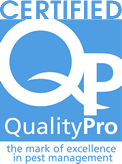Corvallis Oregon, home of the Beavers. Even though I personally don’t live in town, over the past 12 years I’ve probably spent more waking hours in Corvallis than any other city. It’s where my place of work is located, and as a pest technician who spends the greater portion of their time out in the field, it is where most of my customers abide. There are a lot of things that Corvallis does right (although parking isn’t one of them). The big three are community, college sports (Go Beavs!), and my personal favorite is an extreme bent for small business. A stroll through downtown will give you a front row viewing of our small shops, restaurants, and theatres that are a cornerstone of this community.
Sure, it’s trendy now, supporting small businesses that is. There’s nothing a Pacific Northwesterner loves more than an artisan, small batch, limited, bespoke, underground product that has been completely re-imagined, deconstructed, re-constructed and has deep provenance. Unless of course that product happens to be an umbrella (yeah we see you Californians), but here’s the thing, Corvallis was doing this before it was cool.
(Gasps in hipster)
With many towns across the Willamette Valley, and all of Oregon for that matter, the best place to visit as a consumer and therefore the best place to have a storefront is downtown. Like any good downtown there is a mixture of old buildings, converted manufacturing facilities, parks and fountains. See that day spa? That used to be the slaughterhouse. See that trendy speakeasy? That used to be the old speakeasy! What was there between then and now? Llamas! So, you have this beautiful chaotic mess of repurposed, upcycled, retrofitted buildings, possibly alongside a waterfront. Awesome for selfies, awesome for culture, also awesome for rats, cockroaches, ants, mice, and any number of other pests that like to lurk in the many dark corners and travel the aging pipes and sewers of these old buildings.
We live in the age of social media and for small businesses this means image is everything. Not only do you have to have a marketable product, but it has to be presented in a unique way and your ambiance or “vibe” has to stay on point. Remember, everyone that enters your business now has a camera that they want to use to capture themselves having a good time with their partner or best friends. “Doing it for the Gram” is the term I use. Surely outdated because I’m now an old person. Unfortunately, it only takes a couple pictures or reviews, posted to local social media channels to damage a business’s reputation.
Just to be clear this isn’t meant to throw shade at any downtown businesses or businesses that occupy historic buildings. Quite the opposite, these businesses are thriving despite these additional hurdles in their path. They have put in the work, done the research, and invested in themselves. They should be applauded for existing in such an awesome space in spite of certain challenges that exist with aging structures. In this post we will explore some of the bigger pest issues plaguing the commercial space and then we will look at some solutions using the principles of IPM (Integrated Pest Management) to create sustainable, low impact control strategies.
First, what is IPM?
Integrated Pest Management is a holistic approach to pest control that prioritizes proactive strategies and environmentally responsible practices. It involves regular monitoring and identification of pests, emphasizing preventive measures, and modifying the environment through cultural controls. IPM also employs mechanical or physical methods like traps and barriers. Chemical control is limited and deliberate, with a focus on choosing pesticides that are effective, safe, and have minimal impact on non-target organisms. Education and communication play crucial roles in disseminating IPM principles. The adaptive management component ensures ongoing assessment and adjustment of pest control strategies based on monitoring data and changing conditions.
Start outside
With factors like multiple tenancy in single buildings, different cultures and habits at those different businesses, and public traffic around the building, this is the area that you will have the least control.
- Seal things up – First things first, give your exterior some love with regular check-ups. Seal up any cracks or gaps that critters might use as entrances. Depending on the building, this can be a real challenge at times. A historic, 100 year old space that has been converted 7 times is bound to have aging materials and hidden openings. For more complicated or involved repairs, work with a contractor or pest control company that specializes in that type of work…like Good Earth for instance.
- Let’s talk trash – literally. Keep those bins sealed tight, and make sure your waste doesn’t turn into a pest buffet. This goes for recycling as well, don’t let it build up in piles outside the bins. All sorts of critters love harboring in that cardboard. Spruce up the landscaping, too. Trim up those bushes, keep the trees trimmed away from the structure, and minimize low groundcover plants and shrubs. Rats love the shadows and cover they provide and insects like ants and cockroaches like the moisture and decaying plant matter. Keep things dry with hardscaping and drain rock in landscape areas.
- Outdoor lighting – Let’s be savvy about it. Use bug-resistant lights like warm LED’s to keep the winged intruders at bay. Lights that don’t attract flying insects will also attract less of the spiders that prey upon them. This helps keep the façade clean of unsightly web buildup.
- Cleanliness – Regularly sweep away crumbs and keep those outdoor areas spick and span. Use tools like leaf blowers and rakes to make sure you get all the little pieces. Buckets of hot water and deck brushes can do wonders to greasy areas around dumpsters and backdoors. Use a bioactive cleaner in these areas. The enzymes and microbes will break down the grease and will help make these areas easier to clean in the long run. Train your staff to be pest prevention superheroes—spotting trouble and reporting it pronto. Many hands make light work!
Now the inside
Alright, let’s bring the pest-free vibes inside your business! When it comes to the indoor space, think of it as your sanctuary against unwanted guests. There are definitely parallels to the recommendations I made earlier regarding the exterior, but it’s worth repeating. Here’s the lowdown on implementing Integrated Pest Management (IPM) indoors:
- Start with a solid foundation – regular inspections. Check nooks and crannies for any sneaky entry points pests might fancy. Weatherstripping is key. Gaps around doors, especially the bottoms, allow warm airflow and pests follow these currents into the building. In the case of buildings with basements you will want to seal up down there as much as possible as well. Cracks in masonry, pipe penetrations through walls from adjoining properties, old dry floor drains. All these possible entrances must be addressed. Use grout, flashing, and calk to seal those cracks. Keep the drain traps full with water to reduce the occurrence of pests entering from the sewers. This will also have the added benefit of keeping gasses and odors from the sewer from stinking up the place! What you are trying to do is isolate your space from outside influence. Limiting the factors that you have to deal with going forward.
- Next up, trash duty – Keep those indoor bins sealed, emptied regularly, and maintain a strict cleaning routine. Don’t let that cardboard pile up in the mop room. Cardboard boxes are possible vector for the introduction of pests like roaches, pantry moths, and any number of stored product beetles. Anything that may have been infesting the warehouse they came from could be in those boxes. Open them with this in mind and dispose of them promptly in the exterior cardboard bins.
- Proper storage – Keep food supplies sealed in airtight containers. Keep everything up off the ground on wire shelving that lets any crumbs and detritus fall through to the ground where it can be cleaned regularly. Most of this kind of shelving is adjustable so keep that lowest shelf a little higher to make it easier to clean and inspect.
- Make it a team effort – Train your indoor crew to be the front line for pest prevention. Don’t just tell them what to do, set standards of sanitation and explain the reasoning and make it a core value of your establishment. Regular deep cleaning and degreasing can be something that is scheduled for and not just tacked on to an employee’s already busy schedule. Educate them on spotting signs of trouble and reporting it pronto. Don’t keep the back door wedged open because it’s easier to carry things inside and out. Create checklists. Teamwork makes the dream work, right?
- Bring in the pros – It’s best of course, to couple all this with regular service from a professional pest company, like us here at Good Earth Pest Company, that can advise, inspect, monitor, and perform preventative applications specifically tailored to your situation, that can supercharge your pest prevention regimen. They are also the ones you can call on when a pest emergency does arise. We can swoop in and address the issue so you can focus on more important matters, because time is precious, and you can’t do everything.
So, there you have it—your recipe for an indoor space that’s cozy, clean, and pest-free. Stay off the negative social media radar and on the “Best of” lists. We’re always available for advice and service wherever you are on your pest control journey. If you don’t believe me, just give us a call!
We’re always just right down the road,
Adam Hiddelson




